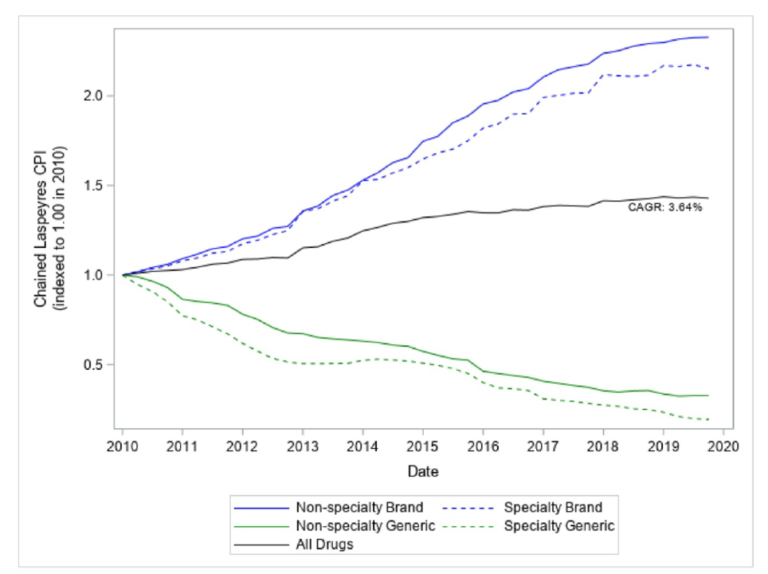If you’ve got a persistent and throbbing toothache that seems to get worse when you chew or bite down on something, you very well may have a tooth infection. Also known as dental abscesses, tooth infections are relatively common and can unfortunately occur at any time—and at any age, says dentist Mary Jo Sandberg, DDS, owner of Sandberg Dental in Ann Arbor, Michigan.
“A tooth infection can happen when the bacteria from a severely decayed tooth gains access to the pulp inside the tooth where the nerves and blood supply reside,” she explains. “This can happen as a result of a traumatic event, like a fall or blow to the tooth that damages the connection between the tooth and supporting structures, or a severe infection of the gums around the tooth that reach the tooth’s root tip.” Sometimes the origin of the infection can even be unknown, she adds.
Experts In This Article
While anyone can get a tooth infection, those most prone to it are people who have poor oral hygiene or those with gum disease, dry mouth, or a high rate of cavities, says Marie M. Jackson, DMD, dentist and member of the Listerine advisory board. Gum disease greatly increases the risk of infection, she adds. “This is because it exposes the roots of teeth, which are not protected by enamel and are more susceptible to decay and subsequent infection issues.”
If you think you’re truly suffering from a tooth infection, contact your dentist as soon as possible so they can determine the best way to treat you. This might include draining the abscess, pulling the infected tooth, and/or prescribing antibiotics, per the Mayo Clinic. In the meantime, here are a few at-home remedies for a tooth infection (many of which also work as home remedies for a toothache) that can help alleviate your discomfort while you wait for your appointment.
Do not try to get rid of a tooth abscess without going to the dentist. This is dangerous, as the infection can spread to nearby teeth, your jaw, or other areas of your body and cause more serious complications.
In This Article
1. Keep your head elevated
When you have a toothache or tooth infection, keeping your head elevated can help prevent any blood and bacteria from pooling in your mouth, Dr. Sandberg says. While you’re likely sitting and standing upright during the day, sleep may be tricky when you’re battling a tooth infection. Consider going to sleep with your head propped up by pillows to maximize your comfort and reduce your pain.
2. Over-the-counter pain relievers
If there is pain and swelling, Alice Hoang, DDS, general dentist and co-owner of Brooklyn Mint Dental in Brooklyn, New York, recommends taking a combination of ibuprofen (Advil or Motrin) and acetaminophen (Tylenol). Both will help manage the pain, and the ibuprofen will help tame inflammation and swelling.
You can take these medications at the same time, but it’s important that you follow the directions on the label of each product and avoid taking too much of either drug (pay attention to both the dosage and the time in between doses).
Note that this advice is only for adults and children ages 12 and older; for younger children, ask their pediatrician what pain relievers are okay to use. You should also check with your doctor if you’re taking any prescription medications.
“Drinking soft drinks with sugar and beverages that are acidic can increase the risk of tooth decay that leads to infection.” —Marie M. Jackson, DMD, dentist
3. Saltwater rinse
Rinsing with salt water can be an effective home remedy for a tooth infection in that it may help keep the infection from worsening significantly until you are able to see a dentist. The salt water works to ensure that the area is kept free of food debris, which can be irritating, explains Dr. Hoang.
Here’s how to do it:
- Mix about a half teaspoon of regular kitchen salt into a cup of lukewarm water. Make sure the water is not too hot or cold, which can cause further irritation (a tooth infection can often cause hot and cold tooth sensitivity).
- Gently swish the salt water around the infected area for about 30 seconds before spitting it out.
- Repeat two to three times a day.
4. Cold compress
Because it’s very likely that your gums will be swollen and painful, you can help to alleviate both symptoms by applying a cold compress. Cold naturally numbs the gums, which is why you’re often sent home with an ice pack after a dental procedure.
Simply wrap an ice pack or small bag of ice cubes in a clean cloth and apply it to the outside of your mouth, near where your pain is located. Ideally, hold the compress there for about 10 to 15 minutes, then remove it for the same amount of time. Repeat as needed throughout the day.
5. Cloves or clove oil
Cloves, the aromatic flower buds that have become a popular spice and aromatic for all sorts of culinary endeavors, have natural analgesic and antibacterial properties that can help relieve toothache pain, according to a 2017 study in Critical Reviews in Microbiology.
Apply a small amount of clove oil directly to the affected tooth or chew on a whole clove. Be careful not to apply clove oil directly to the gums, though, as it can cause irritation.
6. Garlic
Garlic has long been hailed for its antibacterial properties. In fact, it’s been used medicinally since ancient times, according to a 2021 paper in Antioxidants. While it might not be the most pleasant way to alleviate discomfort from a tooth infection, especially if you’re not a fan of garlic to begin with, it can help cut down on pain. You can use garlic as a toothpaste—simply crush it or use a garlic paste and apply to the infected area.
7. Hydrogen peroxide rinse
You may have this mild antiseptic lying around your house, as it can come in handy to prevent infections of minor cuts or scrapes. It can also be useful if you have a tooth infection, as it can help cut down on inflammation and relieve pain. Research, including one 2016 study in the Journal of International Society of Preventive & Community Dentistry, has also shown that hydrogen peroxide can be especially useful in reducing plaque buildup and treating bleeding gums.
Simply mix hydrogen peroxide with equal parts water and swish as you would with a mouthwash—just make sure not to swallow it.
What should you avoid with a tooth infection?
Avoid trying to “treat” the infection yourself to any capacity aside from alleviating pain, notes Dr. Hoang. “Taking old antibiotics you have lying around may not be at the proper dosage and you are unlikely to have enough to finish the recommended duration of daily antibiotics, which will mean the stronger bacteria will survive when the abscess inevitably comes back and it will be more aggressive, require increasingly potent antibiotics, or potentially become antibiotic-resistant,” she says.
She also does not recommend the use of any alcohol-based mouthwashes, which are, generally speaking, on the “no-fly” list for regular dental care. “Alcohol can kill the mucosal cells in your mouth that provide immune support and change the quality of saliva to make it easier for bad bacteria to proliferate,” she says. (So, you may want to cool it on cocktails, too.)
How to prevent a tooth infection
The best way to prevent a tooth infection is to make sure you’re up-to-date with your biannual dental checkups, as these visits allow your dentist to see areas of your mouth that may be decayed and potential gum disease (which can lead to infection), and they can also pick up an existing infection on your X-rays. “Many tooth infections can be seen on X-rays and may not exhibit symptoms yet, so getting to the dentist and having screenings are vital in minimizing the potential for dental emergencies due to infections,” says Dr. Jackson.
Oral hygiene is also paramount. In addition to brushing with a soft toothbrush twice a day for a minimum of two minutes and flossing once a day, Dr. Jackson recommends incorporating mouthwash into your oral care routine. “Rinsing with mouthwash twice a day fights bacteria in the whole mouth that brushing and flossing can’t do alone,” she says.
It’s also vital to be mindful when it comes to your eating and drinking habits to reduce the likelihood of tooth decay and infection. “Processed carbohydrates feed bacteria that lead to tooth infection, so be sure to minimize the frequency of your processed carbohydrate intake,” she says (think: packaged snacks, sweets, and white bread, rice, and pasta). “Drinking soft drinks with sugar and beverages that are acidic can also increase the risk of tooth decay that leads to infection.”
Instead, prioritize foods that are good for your teeth, like crunchy, leafy veggies and fresh fruits.
FAQ
Can you get rid of a tooth infection without antibiotics?
The only way to get rid of a tooth infection is to have the tooth treated by a dentist. Antibiotics only temporarily relieve tooth infections, explains Dr. Jackson. “Teeth work like miniature boxes that trap bacteria long term—the only way to stop bacteria trapped in the tooth causing a tooth infection is to either have the tooth extracted or to have root canal treatment where the infected nerve tissue is removed,” she says.
Does baking soda help with tooth infection?
According to Dr. Sandberg, baking soda has no effect on an infected tooth. “Baking soda is sometimes used as a toothpaste and can help clean your teeth, but once a tooth has gotten infected there are only two choices: remove it or have a root canal treatment,” she adds.
How long can a tooth infection go untreated?
Unfortunately, there’s no way to predict how long an infected tooth can go untreated, as it depends on the nature of the infection, its location, and the health and habits of the person it is infecting, says Dr. Hoang. “In general, if you’re asking yourself this question, you should go ahead and make that dental appointment so we can help you avoid pain, irreversible damage, and/or expensive treatment,” she says.





